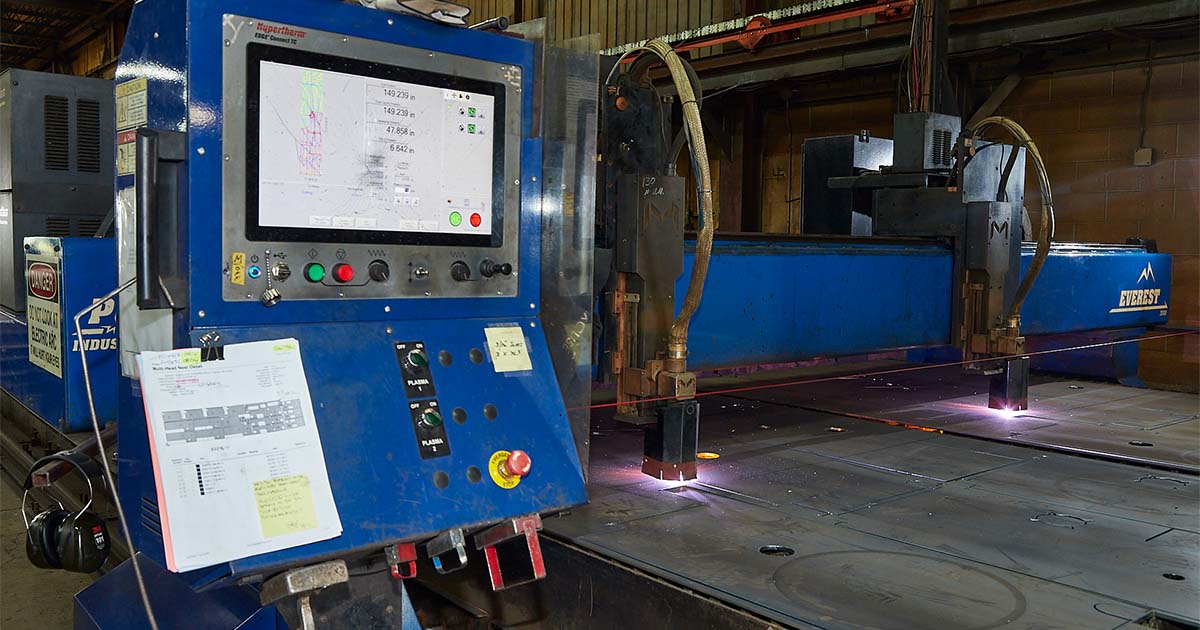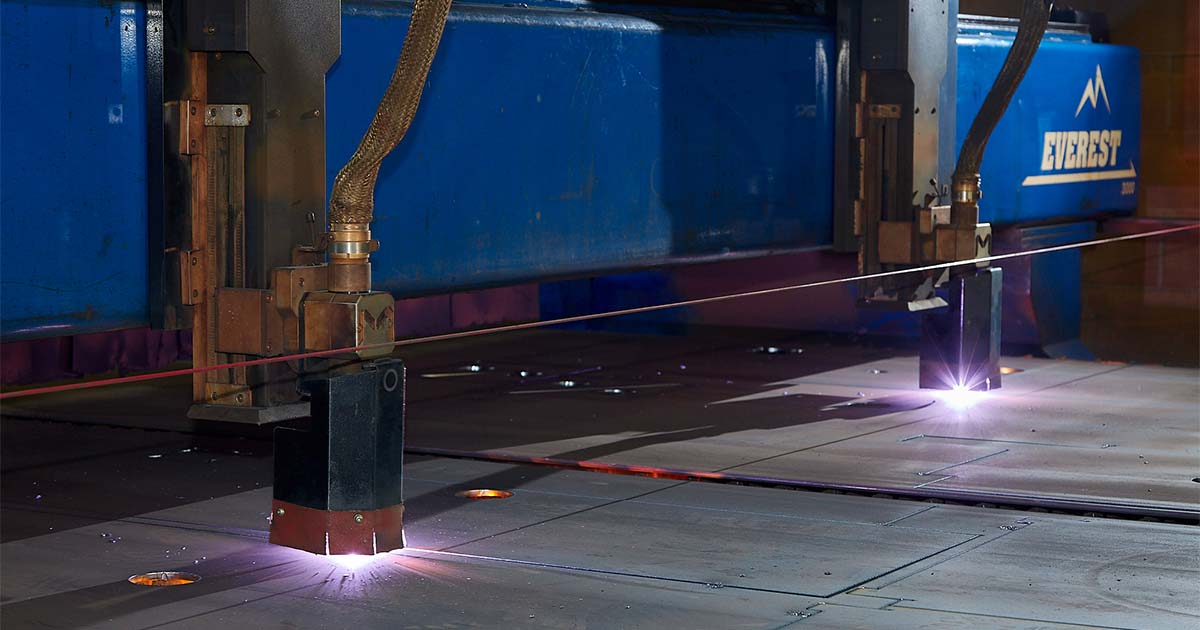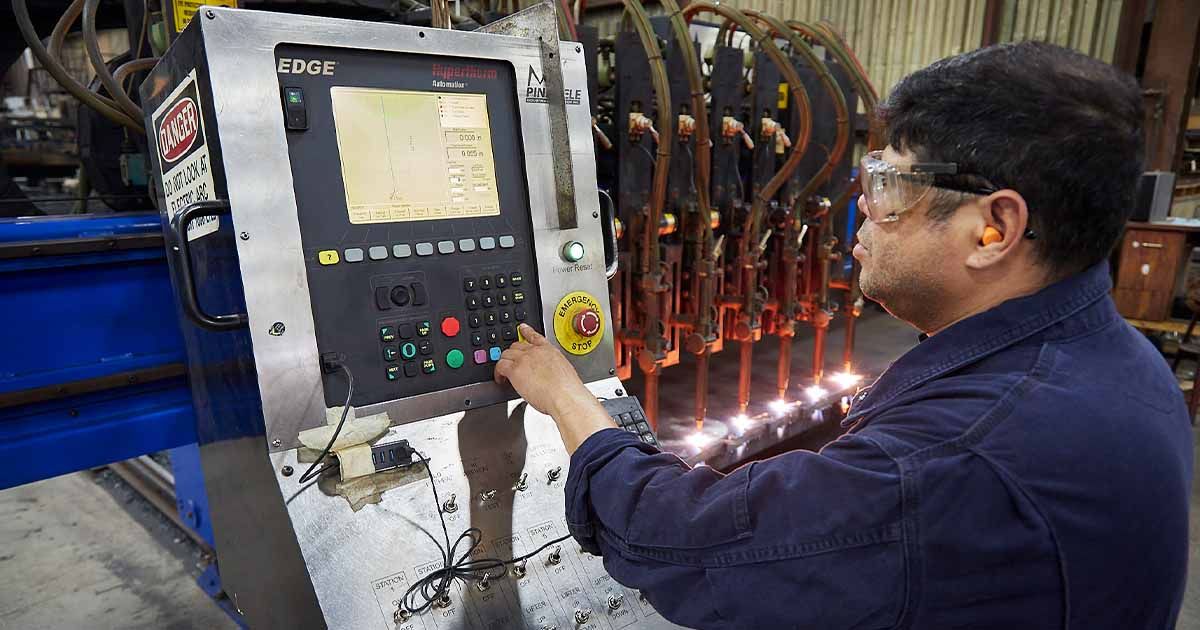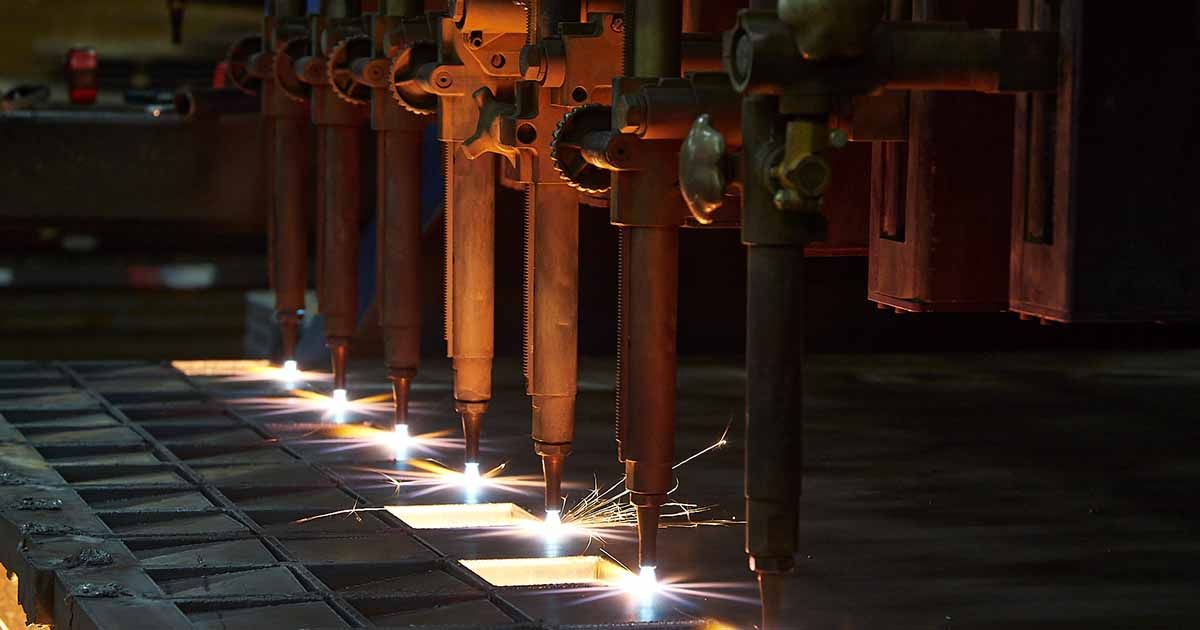
We collect basic website visitor information on this website and store it in cookies. We also utilize Google Analytics to track page view information to assist us in improving our website.
If you’re passionate about metal cutting or just keen to learn more, you’ve landed in the right place.
For over 38 years, Amber Steel has been at the forefront of metal cutting services, specializing in laser cutting, flame cutting, and plasma cutting. Our expertise has carved a niche in this cutting-edge industry, delivering precision and excellence across industrial projects big and small.
In our blog, we’ll share a mix of useful tips, innovative applications, our thoughts on sustainability in steel cutting, and more. Expect stories from the cutting floor, insights into how our processes can streamline projects across industries, and a few lessons we’ve learned along the way.
While we keep some of our trade secrets under wraps, this blog is designed to offer valuable nuggets of wisdom that you simply won't find anywhere else. Whether you’re a professional in the industry or someone fascinated by the possibilities of metal cutting, you'll find something of value here.
So, stick with us as we delve into the finer points of metal work. We’re glad to share our insights and lead discussions that matter to our industry.
How precision metal cutting propels the aerospace industry, from constructing lighter frames to enhancing aerodynamics.
The role of advanced metal cutting in automotive manufacturing, driving innovations in vehicle design and efficiency.
All about the robust and versatile process of flame cutting, ideal for tackling thicker metals with precision and ease.
Discover the art of crafting metal furniture, where cutting techniques meet design to create both functional and aesthetic pieces.
A behind-the-scenes look at the mechanics of metal cutting technologies and the science that makes them tick.
Laser cutting is where extreme precision meets efficiency, allowing for intricate designs and clean finishes.
The critical role of precise steel cutting in developing reliable and intricate medical devices.
How steel cutting supports the oil and gas industry with components that withstand extreme environments and pressures.
Known for its speed and versatility, plasma cutting slices through conductive metals with hot plasma.
Safety first! Tips and insights on maintaining a safe environment while handling powerful metal cutting equipment.
The backbone of construction, where steel fabrication and cutting technologies create frameworks that shape skylines.
Sustainability
A look at sustainability in metal cutting, focusing on practices that reduce waste and conserve energy to protect our planet.

Plasma cutting is a balancing act of precision and durability, orchestrated by electrodes and nozzles. These critical components are the conductors of electricity, creators of intense plasma arcs, and tuners of gas flow. They do all this while withstanding extreme conditions.
In this article, we delve deep into the intricacies of plasma cutting consumables, demystifying the essential components that make this process a remarkable force in the realm of metal fabrication.
But why should you care about the intricacies of plasma cutting consumables? The answer lies in the quality, efficiency, and cost-effectiveness of your projects. Your knowledge of these components can lead you to the right cutting service provider, ensure superior quality in your endeavors, and potentially save you money in the long run.
At Amber Steel, we specialize in laser, plasma and flame cutting, and have always been a "total source" service for the production of quality steel products. Quality is achieved by utilizing the right production technique for the right product. Our continual investment in equipment and technology enables us to offer clients many production alternatives to achieve exact product specifications and tolerances. If you’re interested in learning more about steel cutting or have a project in mind that you would need our expertise on, do not hesitate to reach out. We’re always one email or phone call away.
Plasma cutting is all about harnessing the power of electrical arcs.
By creating a controlled electrical arc between an electrode and the workpiece, a high-temperature plasma jet is generated, reaching staggering temperatures exceeding 20,000°C. This intense heat transforms metal into molten form, making it susceptible to precise cutting.
One of the defining characteristics of plasma cutting is its reliance on electrically conductive materials. Metals like stainless steel, copper, and aluminum are ideal candidates for this process. However, plasma cutting can't penetrate non-conductive materials such as stone or glass.
Plasma cutting stands out when compared to alternative cutting methods, especially in terms of speed, precision, and material suitability.
Speed and Efficiency: Plasma cutting outpaces traditional flame cutting, particularly for thin metal sheets. Its speed can reach remarkable levels, up to 5 to 6 times faster than gas cutting.
Cutting Thickness: For those dealing with thick materials, high-power plasma cutting shines, as it can effortlessly handle thicknesses up to 150mm. In contrast, flame cutting remains the preferred choice for thicker materials.
Precision and Quality: When it comes to precision and minimal thermal deformation, plasma cutting takes the lead. The latest fine plasma cutting machines can achieve cutting accuracy akin to laser cutting, ensuring top-notch results.
Material Suitability: Plasma cutting boasts versatility across a wide range of metals, especially non-ferrous ones like stainless steel, aluminum, and copper. On the other hand, flame cutting primarily caters to carbon steel.
Now, let's dive into the core of our discussion ‒ the consumables that play an important role in the world of plasma cutting.
Electrodes and nozzles are unsung heroes in the plasma cutting process. These critical components endure extreme temperatures and inevitably wear out over time. The quality and condition of electrodes and nozzles directly influence the precision and quality of your cuts. Regularly replacing these consumables is imperative to maintain peak performance.
In addition to electrodes and nozzles, the choice of gas is another vital aspect of plasma cutting. Various gases, such as argon, nitrogen, air, oxygen, and hydrogen-argon mixes, offer specific effects on cutting quality, speed, and consumable lifespan. Selecting the right gas is paramount to optimizing cutting cost and efficiency.
Electrodes in plasma cutting systems are responsible for conducting electrical current, creating the essential plasma arc. This arc, formed by ionizing the cutting gas, is the key to precision metal cutting.

Within the world of plasma cutting, different electrodes cater to specific cutting environments and requirements:
Hafnium Electrodes: Modern plasma cutting systems frequently employ electrodes containing hafnium. Hafnium, with its high melting point, proves invaluable in sustaining the arc, whether in air or oxygen cutting environments.
Copper or Copper/Silver Composite Holders: These holders play a vital role in securing the emissive element, hafnium, in place within the electrode structure.
Variations Abound: Depending on the plasma cutting system and the demands of the cutting process, various electrode types are available. Their selection hinges on factors like the material being cut and the desired cut quality.
Cutting Environment: The chosen cutting environment, whether air or oxygen plasma cutting, significantly impacts electrode wear. Each environment exerts distinct effects on the electrode's longevity.
Electrode Material: Hafnium content plays a big role in the durability and performance of electrodes at high temperatures.
Cutting Parameters: Factors such as current settings, cutting speed, and the metal's type affect the rate at which electrodes degrade over time.
Quality of Consumables: Overall consumable quality, encompassing the electrode, wields a direct influence over both performance and lifespan.
Routine electrode inspections are vital to sustain optimal cutting performance and quality. Replace electrodes promptly when signs of wear emerge.
In selecting the ideal electrode for your plasma cutting requirements, a thoughtful evaluation of factors such as the material to be cut, cutting environment, and system specifications is essential. Regular maintenance and timely electrode replacement are essential practices to maintain peak performance and extend the longevity of the plasma cutting process.
In a plasma cutter, the nozzle plays a crucial role in focusing the plasma arc and the surrounding gas.
This precise focus is the key to achieving clean and accurate cuts. The nozzle's role is to ensure even distribution of the shielding gas around the plasma jet, contributing to a stable and clean cutting process.
Single Gas Nozzles: These nozzles rely on a single gas for plasma generation and cooling, as well as shielding the cutting area.
Double Gas Nozzles: Double gas nozzles use two different gases - one for creating plasma and the other to shield the cutting area from external influences.
Vortex Nozzles: Vortex nozzles guide the gas in a swirling motion around the central opening. This stabilizes the plasma jet, optimizing the cutting process.
Conical Nozzles: Conical nozzles feature a tapered opening that results in a more focused plasma jet, making them ideal for precision cuts and intricate details.
High-Definition (HD) Nozzles: HD nozzles are designed for specialized plasma cutting systems that demand higher cutting quality and tighter tolerances.
The correct pairing of electrodes and nozzles has a direct bearing on cut quality, process efficiency, and the durability of consumables.
For example, a worn or improperly sized nozzle can lead to a less focused plasma arc, causing wider cuts (kerf) and diminished cut quality. Similarly, an electrode exhibiting significant wear, such as a deep pit in the hafnium insert, can compromise the cutting process, making it challenging to achieve effective cuts and potentially harming other components within the torch.
Regular inspections and diligent maintenance of both electrodes and nozzles are imperative. This entails thorough checks for wear or damage, ensuring accurate installation and alignment, and prompt replacement when necessary. Often, it is advisable to replace both the nozzle and electrode concurrently to ensure optimal performance, rather than pairing a new electrode with a worn nozzle, which could hinder cutting results.
Ultimately, achieving high-quality plasma cutting requires the proper combination and maintenance of electrodes and nozzles. To extend the lifespan of these consumables and achieve superior cutting results, consistent assessments and timely replacements are essential.
Knowing plasma cutting consumables is more than just technical know-how – it's the key to better results.
Here's the rundown on why this matters to you:
Choosing Your Cutting Service Wisely: Understanding consumables helps you pick a cutting service that knows its stuff. A team well-versed in electrodes and nozzles is more likely to nail your project with precision and keep it within budget. It’s about getting what you pay for and then some.
Quality of Your Final Product: The right consumables make a world of difference in the final outcome. Different materials and their thicknesses need the right electrode and nozzle pair to shine. A savvy service provider doesn’t just pick the right tools; they know how to make the most of them. This means cleaner cuts, less waste, and a product that looks and functions as it should.
Cutting Costs, Not Corners: Knowing your way around consumables can be a ticket to cost savings. A provider who knows their gear can recommend choices that keep quality high but bring costs down. Think longer-lasting consumables or faster cuts to save on labor. It's about smart spending for smart results.
While the details of plasma cutting consumables might not be top of your mind, a bit of insight here can guide you to the right service, ensure top-tier quality, and maybe even save some cash. It's about ensuring your project hits the mark for quality and cost, backed by the best in the business.
Plasma cutting consumables have a major impact on the cut quality and overall efficiency of your product. Regular checks, correct pairings, and timely replacements are foundational for top-notch performance in plasma cutting.
But it's not just about keeping the process going. Quality consumables mean more precise cuts, less downtime, and a longer life for your plasma cutter. They're a big part of our promise for consistent, top-quality cuts in every job we do.
We're open for business, ready to tackle any plasma cutting challenge you have, big or small. Our team's geared up to tailor our solutions to your specific needs, always aiming for the highest quality.
At Amber Steel, we're not just about plasma cutting – we offer laser and flame cutting too. We've always been your one-stop shop for top-grade steel products. The right technique for the right product is our mantra, and continual investment in our gear and tech means we give you more options to meet your precise needs and tolerances. Interested in steel cutting, or have a project in mind? Just reach out. We're just an email or call away, ready to lend our expertise.

Flame cutting is indispensable in sectors like shipbuilding and construction, where precision and reliability in metal processing are essential. At Amber Steel, we recognize the uniqueness of each project and the importance of selecting the appropriate cutting method for its success.
In this blog post, we’ll explore the versatility of flame cutting, a technique renowned for its proficiency with thick and heavy materials, particularly carbon steel. Our goal is to provide you with the knowledge necessary to make informed choices for your industrial projects.
As experts in flame cutting, we at Amber Steel are committed to delivering unparalleled services across various industries. Our expertise spans across laser, plasma, and flame cutting. Known as a "total source" provider, we are dedicated to producing high-quality steel products. We achieve this through the strategic use of the right production techniques, ensuring the perfect match for each product. Our ongoing investments in equipment and technology afford our clients a range of production alternatives, tailored to meet exact product specifications and tolerances.
For those keen to delve deeper into the world of steel cutting, or if you have a specific project that could benefit from our expertise, we encourage you to reach out. Our team is just an email or phone call away, ready to assist with your needs and answer any queries you might have.
Flame cutting is a powerful and precise method for slicing through thick metals, particularly mild steel. This thermal process is a sophisticated interplay between intense heat and metal.
Here's how it works: an intense oxy-fuel gas flame, powered by acetylene, propane, or natural gas, brings the metal to its ignition temperature. At this critical juncture, a burst of oxygen is introduced, effectively melting the excess material to produce a clean and precise cut.
The key components of flame cutting are:
Cutting Torch: The primary tool in flame cutting, this directs the oxy-fuel gas flame precisely onto the metal.
Fuel Gas Source: Options include acetylene, propane, or natural gas, each fueling the flame in its unique way.
Oxygen Source: This is crucial for removing the molten metal, playing a central role in achieving that perfect cut.
Cutting Table: A robust platform, it supports the metal during the cutting process.
Safety Gear: Given the high-intensity nature of flame cutting, appropriate protective gear is non-negotiable for the safety of operators.
Each component plays a vital role, ensuring the flame cutting process is not just effective, but also safe and efficient.
Flame cutting stands out in the industrial world for its distinct set of benefits, making it a preferred method for a variety of applications. Here’s why:
Mastery in Handling Thick Metals: Flame cutting is the go-to technique for cutting through heavy metal with ease. It’s particularly adept at slicing through steel up to an impressive 270mm thickness in a single pass, showcasing its robust capability.
Cost-Effectiveness: In an industry often challenged by rising costs, flame cutting services offer a more budget-friendly solution. It primarily uses gas and oxygen, making it an economically sound choice for many projects.
Versatility in Application: Flame cutting isn’t limited to a single industry. Its utility extends from manufacturing to aerospace, demonstrating its adaptability to various metal-cutting requirements.
Simplicity of Equipment: Its ease of operation and accessibility make it a practical choice for many.
Customization and Scalability: Flame cutting services are as versatile as they are scalable. Whether you’re working on a unique, one-time project or ramping up for larger-scale production, this method offers the flexibility to meet diverse requirements while maintaining precision and quality.
It’s important to recognize that flame cutting, like any technique, has its limitations. It’s not the best fit for highly detailed, precision cuts, as the heat involved in the process can cause warping or distortion. However, for projects involving thicker materials or larger profiles where ultra-precision is not the top priority, or can be fine-tuned post-cutting, flame cutting truly excels.
Heavy industries need a cutting solution as robust as their projects. Flame cutting is that solution. It's a powerhouse in sectors like shipbuilding and construction, where dealing with steel isn't just a task, it's the task.
Consider shipbuilding. Here, flame cutting plays a crucial role. It's how massive steel plates and sections are precisely shaped to build everything from the bow to the stern of giant ships.
In construction, think of skyscrapers and bridges. Flame cutting is front and center here, shaping the beams and girders that make up these structures. In this world of heavy steel, flame cutting is a go-to for its ability to handle tough jobs.
Where typical metal cutting methods falter, flame cutting steps in. It's all about handling the big stuff – thick steel plates that others find too challenging. This is where flame cutting shines, using intense heat to cut through even the thickest steel, especially carbon steel, known for its strength and resilience.
Imagine a scenario with really thick metal. Flame cutting is like the hero coming to the rescue. It heats metals to extreme temperatures, ideal for those hefty steel plates that need a firm hand.
In the domain of metal thickness, flame cutting is king, effortlessly dealing with a wide range of materials.
Metal fabrication isn't a one-size-fits-all business. Projects often require a personalized approach, and this is where flame cutting excels. It's versatile, adjusting to different sizes and thicknesses of metal with ease.
Companies like Rode Welding and Ruff Manufacturing are experts in flame cutting. They're all about precision, cutting large steel plates to specific requirements. Whether it's creating detailed shapes, handling unique sizes, or meeting tight tolerances, flame cutting is their tool of choice.
Flame cutting's flexibility makes it ideal for projects needing a custom touch. It's about making your vision a reality, with each cut tailored to your needs.
Metal cutting isn't just about slicing through material; it's about making smart choices. The right method can make a job efficient, cost-effective, and high-quality.
So, what should guide this decision? Think about the metal's type and thickness, the precision you need, the speed of the job, and, of course, the cost.

Metals are a diverse bunch. They differ in thickness, hardness, conductivity, and more. These traits steer you towards the best cutting method. Softer metals like aluminum? Hand tools or abrasive methods work well. Tough customers like titanium? They often call for something heftier, like plasma or laser cutting.
Thicker metal demands a robust approach. Think flame or plasma cutting. For the thinner varieties, hand cutting or waterjet methods are often sufficient.
How precise do you need to be? Aerospace or medical fields demand high accuracy and minimal distortion. Construction? It can handle a bit more give-and-take.
Time is money. Need a fast turnaround? Plasma cutting might be your go-to. If it's a low-volume or custom job, slower methods like manual or laser cutting could be more up your alley.
Look at the whole picture: equipment, maintenance, labor. Some methods might cost more upfront but save you money in the long run. Others are cheaper to start but might need more upkeep.
Getting advice from seasoned pros is a smart move. They can weigh in on your specific needs, budget, and desired outcomes, offering insights into the latest cutting tech and techniques.
Each method, be it flame, plasma, or laser cutting, has its pros and cons. Flame cutting is great for thick, tough metals but can cause thinner metals to warp. Plasma cutting is quicker and more precise for thicker metals, with less heat to boot. Laser cutting is top-notch for accuracy and efficiency, though it might dent your wallet more at the outset. Your choice should match your project's unique needs and limits.
Flame cutting is a robust and formidable technique in heavy industries like shipbuilding and construction. It's not just about slicing through metal; it's about precision and understanding the material. Imagine shipbuilders shaping massive steel plates, the very foundations of mighty vessels. Consider the construction industry, where steel beams and girders, shaped by flame cutting, form the skeleton of skyscrapers and bridges.
Yet, it's crucial to recognize that flame cutting isn't a catch-all solution. It demands expertise, a discerning eye for when and where it's most effective. It's not as simple as directing a flame at any metal and expecting results. Every material reacts differently, and that's where our expertise comes into play.
At Amber Steel, we approach each project with a consultative, client-centered mindset. We don't just offer a service; we deliver a tailored solution. Our goal is to align each project with the most suitable cutting method, transforming success from a mere possibility into a certainty.
Flame cutting is a vital part of our repertoire, but it's not the only one. We recognize the varied needs of the industrial world, hence our diverse range of cutting technologies. Whether your project is large or small, simple or complex, our team is equipped to provide expert guidance and superior cutting solutions.
We pride ourselves on being a "total source" service in laser, plasma, and flame cutting, consistently delivering quality steel products. This commitment to quality is realized by selecting the appropriate production technique for each product. Our continuous investment in equipment and technology affords us the flexibility to offer multiple production alternatives, ensuring precise adherence to product specifications and tolerances.
Interested in exploring more about steel cutting, or have a specific project in mind? Don't hesitate to reach out. At Amber Steel, we're always just an email or phone call away, ready to assist with your cutting needs and queries.